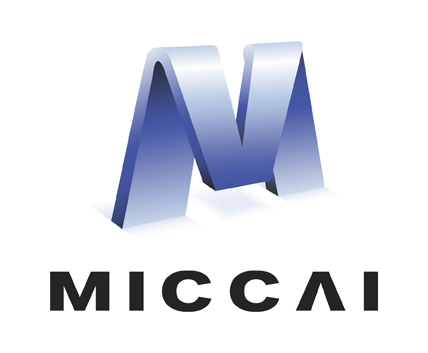Abstract
Large curated datasets are necessary, but annotating medical images is a time-consuming, laborious, and expensive process. Therefore, recent supervised methods are focusing on utilizing a large amount of unlabeled data. However, to do so, is a challenging task. To address this problem, we propose a new 3D Cross-Pseudo Supervision (3D-CPS) method, a semi-supervised network architecture based on nnU-Net with the Cross-Pseudo Supervision method. We design a new nnU-Net based preprocessing. In addition, we set the semi-supervised loss weights to expand linearity with each epoch to prevent the model from low-quality pseudo-labels in the early training process. Our proposed method achieves an average dice similarity coefficient (DSC) of 0.881 and an average normalized surface distance (NSD) of 0.913 on the 2022-MICCAI-FLARE validation set (20 cases).
Y. Huang and H. Zhang—These two authors are contributed equally to this work.
Access this chapter
Tax calculation will be finalised at checkout
Purchases are for personal use only
Similar content being viewed by others
References
Liu, X., Song, L., Liu, S., Zhang, Y.: A review of deep-learning-based medical image segmentation methods. Sustainability 13(3), 1224 (2021)
Shen, D., Guorong, W., Suk, H.-I.: Deep learning in medical image analysis. Annu. Rev. Biomed. Eng. 19, 221 (2017)
Monteiro, M., et al.: Multiclass semantic segmentation and quantification of traumatic brain injury lesions on head CT using deep learning an algorithm development and multicentre validation study. Lancet Digital Health 2(6), e314–e322 (2020)
Getao, D., Cao, X., Liang, J., Chen, X., Zhan, Y.: Medical image segmentation based on u-net: a review. J. Imaging Sci. Technol. 64, 1–12 (2020)
Isensee, F., et al.: nnU-net: Self-adapting framework for u-net-based medical image segmentation. arXiv preprint arXiv:1809.10486 (2018)
Li, X., Lequan, Yu., Chen, H., Chi-Wing, F., Xing, L., Heng, P.-A.: Transformation-consistent self-ensembling model for semisupervised medical image segmentation. IEEE Trans. Neural Netw. Learn. Syst. 32(2), 523–534 (2020)
Yu, L., Wang, S., Li, X., Fu, C.-W., Heng, P.-A.: Uncertainty-aware self-ensembling model for semi-supervised 3D left atrium segmentation. In: Shen, D., et al. (eds.) MICCAI 2019. LNCS, vol. 11765, pp. 605–613. Springer, Cham (2019). https://doi.org/10.1007/978-3-030-32245-8_67
Li, S., Zhang, C., He, X.: Shape-aware semi-supervised 3D semantic segmentation for medical images. In: Martel, A.L., et al. (eds.) MICCAI 2020. LNCS, vol. 12261, pp. 552–561. Springer, Cham (2020). https://doi.org/10.1007/978-3-030-59710-8_54
Luo, X., Chen, J., Song, T., Wang, G.: Semi-supervised medical image segmentation through dual-task consistency. Proc. AAAI Conf. Artif. Intell. 35, 8801–8809 (2021)
Chen, X., Yuan, Y., Zeng, G., Wang, J.: Semi-supervised semantic segmentation with cross pseudo supervision. In: Proceedings of the IEEE Computer Society Conference on Computer Vision and Pattern Recognition, pp. 2613–2622 (2021)
Ma, J., et al.: Loss odyssey in medical image segmentation. Med. Image Anal. 71, 102035 (2021)
Ronneberger, O., Fischer, P., Brox, T.: U-net: Convolutional networks for biomedical image segmentation. arXiv:1505.04597
He, K., Zhang, X., Ren, S., Sun, J.: Deep residual learning for image recognition. In: Proceedings of the IEEE Computer Society Conference on Computer Vision and Pattern Recognition, 2016-December, pp. 770–778 (2016). (ISBN: 9781467388504 _eprint: 1512.03385)
Ma, J., et al.: Fast and low-GPU-memory abdomen CT organ segmentation: the flare challenge. Med. Image Anal. 82, 102616 (2022)
Simpson, A.L., et al.: A large annotated medical image dataset for the development and evaluation of segmentation algorithms. arXiv preprint arXiv:1902.09063 (2019)
Heller, N., et al.: The state of the art in kidney and kidney tumor segmentation in contrast-enhanced CT imaging: results of the kits19 challenge. Med. Image Anal. 67, 101821 (2021)
Heller, N., et al.: An international challenge to use artificial intelligence to define the state-of-the-art in kidney and kidney tumor segmentation in CT imaging. Am. Soc. Clin. Oncol. 38(6), 626–626 (2020)
Ma, J., et al.: Abdomenct-1k: is abdominal organ segmentation a solved problem? IEEE Trans. Pattern Anal. Mach. Intell. 44(10), 6695–6714 (2022)
Clark, K., et al.: The cancer imaging archive (TCIA): maintaining and operating a public information repository. J. Digit. Imaging 26(6), 1045–1057 (2013)
Acknowledgements
We would like to thank the School-Enterprise Graduate Student Cooperation Fund of Shenzhen Technology University and the Project of Educational Commission of Guangdong Province of China (No. 2022ZDJS113).
Author information
Authors and Affiliations
Corresponding author
Editor information
Editors and Affiliations
Rights and permissions
Copyright information
© 2022 The Author(s), under exclusive license to Springer Nature Switzerland AG
About this paper
Cite this paper
Huang, Y., Zhang, H., Yan, Y., Hassan, H. (2022). 3D Cross-Pseudo Supervision (3D-CPS): A Semi-supervised nnU-Net Architecture for Abdominal Organ Segmentation. In: Ma, J., Wang, B. (eds) Fast and Low-Resource Semi-supervised Abdominal Organ Segmentation. FLARE 2022. Lecture Notes in Computer Science, vol 13816. Springer, Cham. https://doi.org/10.1007/978-3-031-23911-3_9
Download citation
DOI: https://doi.org/10.1007/978-3-031-23911-3_9
Published:
Publisher Name: Springer, Cham
Print ISBN: 978-3-031-23910-6
Online ISBN: 978-3-031-23911-3
eBook Packages: Computer ScienceComputer Science (R0)




